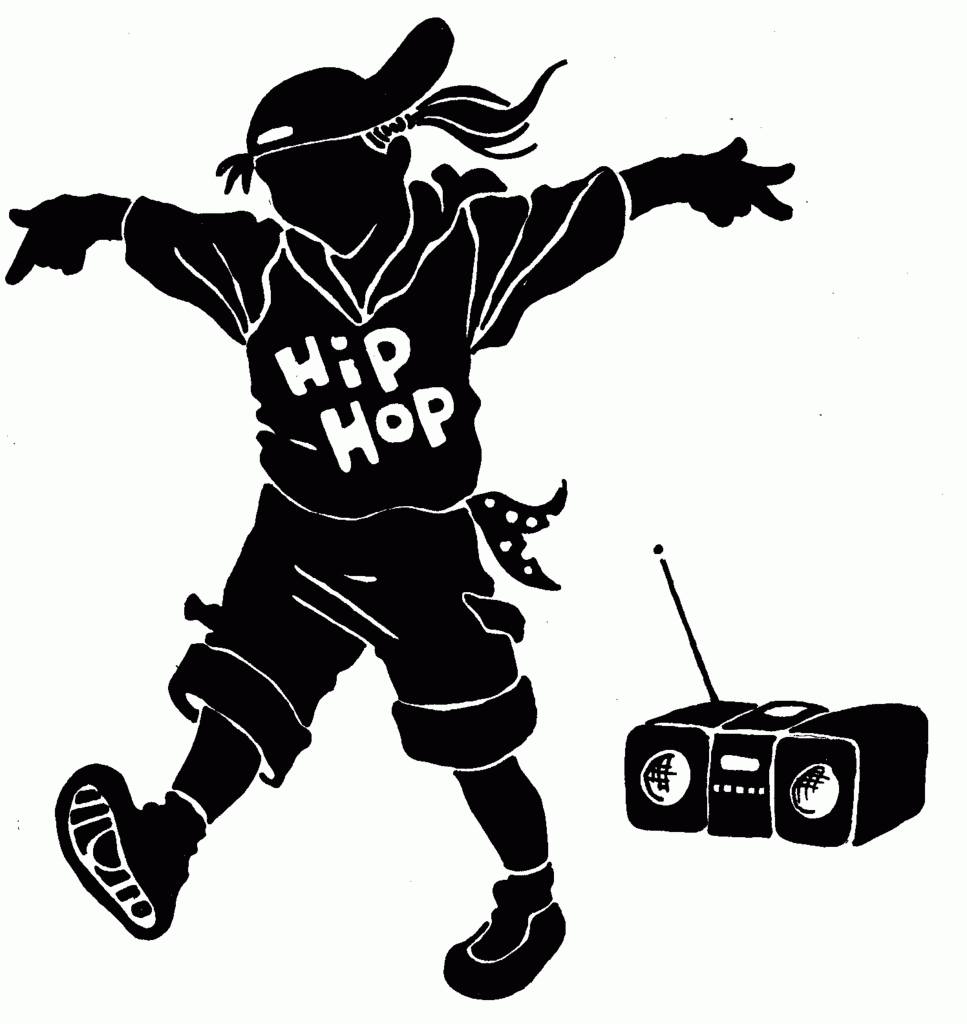[embeddoc url=”https://blackmusicscholar.com/wp-content/uploads/2018/05/Gabrielle-Brims-Evolution-of-Hip-Hop.pdf” download=”none”]
Hip-hop was a cultural expression that first came about in the early 1970’s in the African-descent communities of Harlem and New York City. Hip-hop culture consisted of graffiti art, break-dancing, DJ-ing, and MC-ing, or rapping. Rap is the most popular element of hip-hop. It was derived from the cultural and verbal traditions of African Americans, Afro-Carribeans, and Latinos, such as storytelling, radio personalities of the 1940’s and 1950’s, and “toasting”.
During the 1970’s, DJs were the focus of hip-hop. Afrika Bambaataa, Grandmaster Flash, and Kool DJ Herc were noted for the development of hip-hop as a cultural expression of music, art, dance and spoken word. The first rap hit was Sugar Hill Gang’s “Rapper’s Delight” (1979). In 1981, Grandmaster Flash and the Furious Five’s song “The Adventures of Grandmaster Flash on the Wheels of Steel” became one of the first songs to feature the DJ technique, scratching, in order to produce a percussive sound. In addition, the song brought about a fresh style of recording called the mix, which combined various words and phrases from several songs. In addition, remixes appeared, in which a DJ or producer reassembled songs and added rapper’s voices on top. Furthermore, Afrika Bambaataa’s “Planet Rock” established sampling by using sections of previously recorded songs as the base of the song. Sampling made it digitally easier to record loops. Along with their dynamic music, dances such as “pop-locking” and “electric boogie” became very popular.
During the 1980’s, live performances of DJs began to decrease and MC-ing became the focus, where the MC represented the entire hip-hop culture. Female MCs used “answer” songs to criticize the male MCs lyrics. Within the late 1980’s, rap music shifted to international markets. In fact, it reached corporate with the help of Russell Simmons’s label, Def Jams, which introduced a harder sound that consisted of hard rock riffs, limited instrumentation, and forceful timbres. In 1987, Public Enemy emerged on the scene of hip hop as the first politically oriented hip-hop group, encouraging political confrontation in their lyrics.
In the mid-1980s to mid-1990s, four styles known as classic, hardcore, pop and alternative, developed in hip-hop. Classic hip hop artists consisted of Naughty by Nature, A Tribe Called Quest, and Nas. Their lyrics contained themes of storytelling, catchy hooks, and explicit language. Missy Elliot was credited with being the first successful female songwriter, rapper, singer and producer. In addition, Lauryn Hill was a well-respected MC and vocalist during the mid-1990s. Other female rappers that offered viewpoints on politics sex and other topics in the 1990s include Da Bratt, Eve, Lil’ Kim, Foxy Brown, Yo-Yo, and MC Lyte.
The hardcore style of hip-hop that developed in the 1990s expounded on male sexual ability and domination, urban and street life, and Afrocentric themes. Several hardcore artists were arrested during their careers. Hardcore lyrics were often times not an actual portrayal of reality, but they contained negative and sexual portrayals of women. Performances were limited for hardcore rap artists due to rap music’s association with violence and the media’s exploitation of negative events that were associated with rap.
MC Hammer, Jazzy Jeff, and Fresh Prince, represented pop rap that contained humorous lyrical content as well as catchy, upbeat, and less controversial lyrics. R&B rap was represented by artists like Heavy D and the Boyz. This style of rap consisted of bass lines, harmonized choruses, sung refrains and keyboard chords. New Jack swing was a branch of R&B rap that contained syncopated and swung rhythms. New Jack Swing artists include Bell Biv Devoe, Johnny Kemp and Keith Sweat.
The diversity within the mid-1980s and mid-1990s also included different regional styles such as West Coast, East Coast, and the South. The west coast contained themes of Black gangster characters from 1970s films that ultimately led to the creation of the sub-genre gangsta rap. This rap style promoted gang life and street culture. Artists include N.W.A., 2 PAC, Ice Cube, etc. Similarly, east coast rappers also utilized the gangsta rap theme. These artists include the Notorious B.I.G., Wu-Tang Clan, Mobb Deeo, etc. Both east and west coast rappers developed a feud over the authenticity of the gangsta lifestyle’s that were mentioned within the lyrical content. Nevertheless, the South consisted of rap styles such as trap-music, New Orleans bounce music, Memphis crunk, etc. Southern rap artists include Goodie Mob, Master P, Outkast, Da Brat, etc.
In the twenty-first century, auto-tune emerged in hip-hop and it was utilized by artists such as T-Pain and Lil Wayne. In addition, hip-hop dance music became popular with dances such as “jerking”, “twerking”, “crip-walk”, “stanky legg”, etc. Furthermore, trap music emerged which focuses on the lifestyles of drug dealers.


